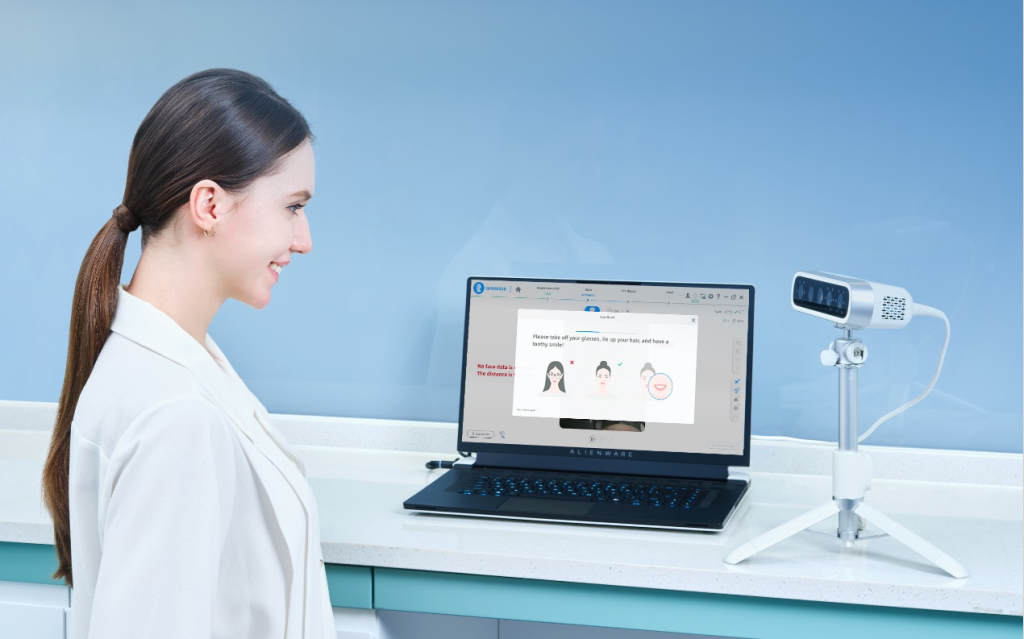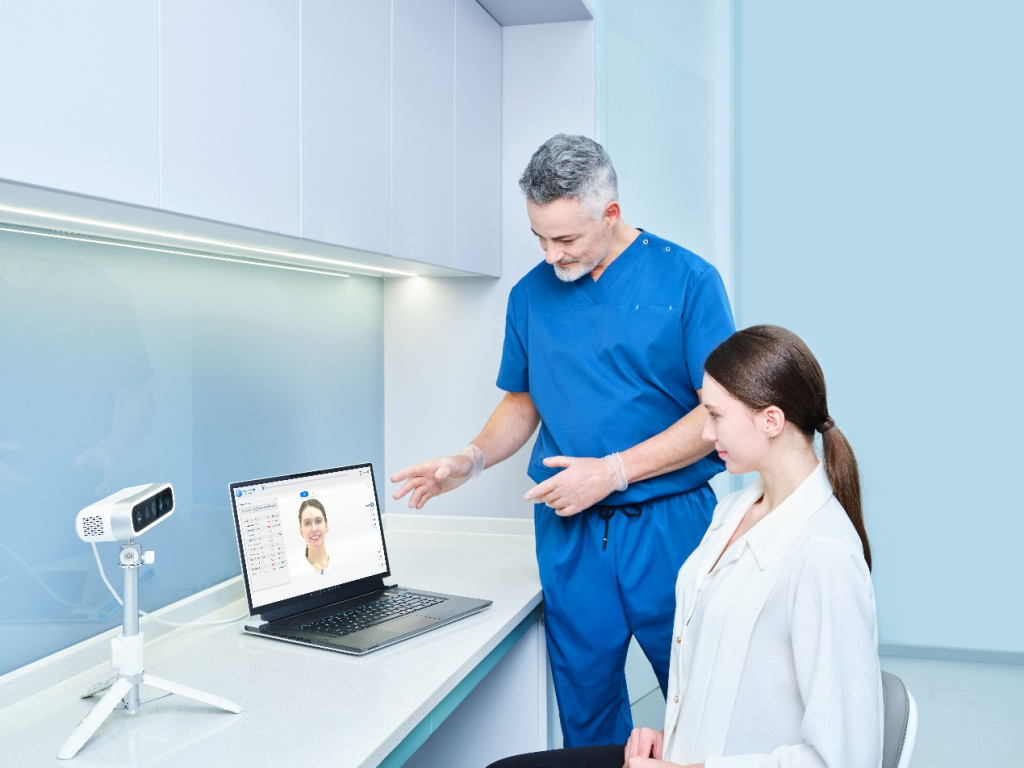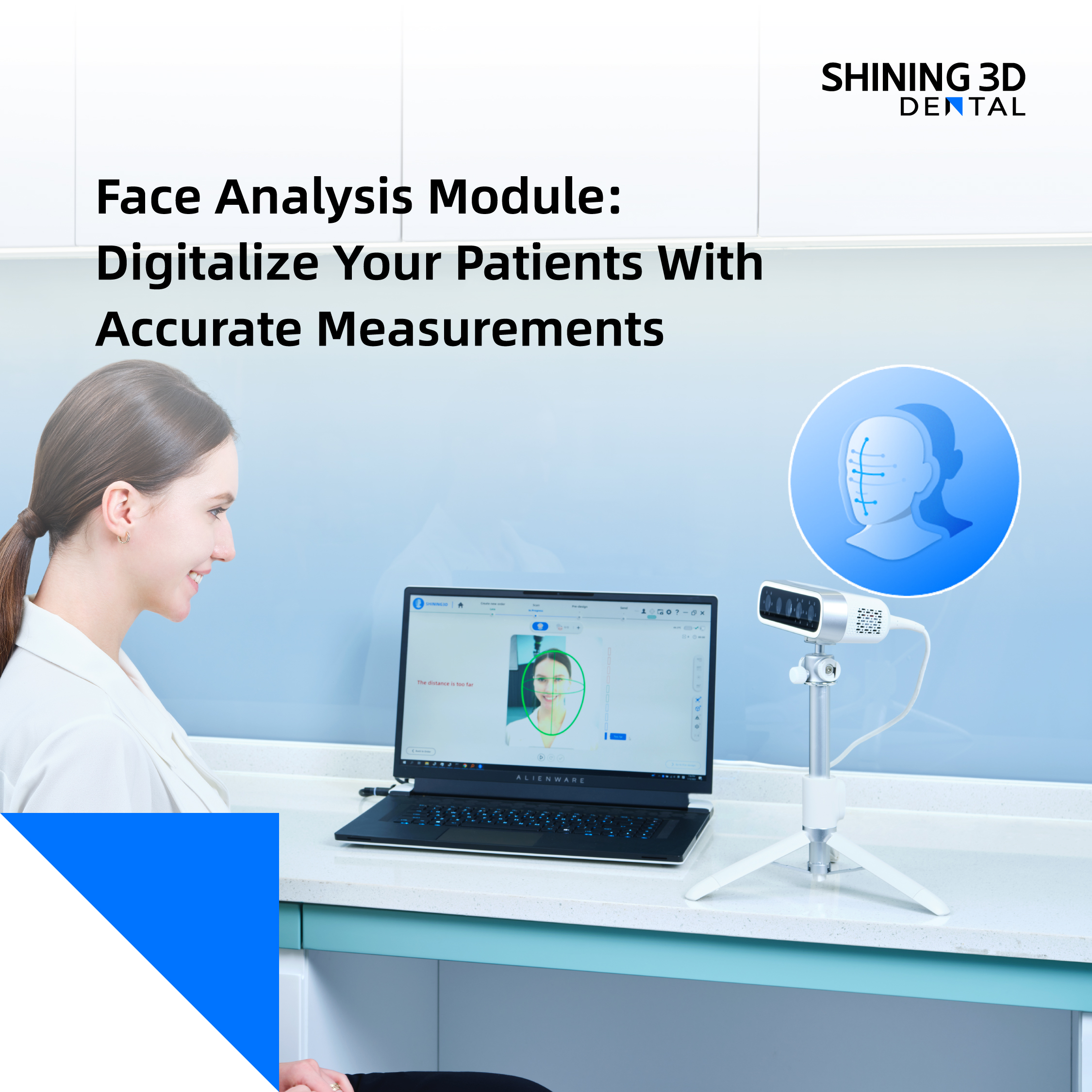MetiSmile, a cutting-edge 3D facial scanner developed by SHINING 3D (Fig 1), employs an innovative technology that revolutionizes the way we capture and construct digital face models. With exceptional speed and precision, this state-of-the-art device can produce a highly detailed 3D representation of an individual’s face within 10 seconds. The face analysis module from software will digitalize patients with accurate measurements.

Figure 1: A female patient is using the MetiSmile to capture her facial data herself
After obtaining the digital facial model, you might wonder about the potential applications. In this article, we delve into one of its pivotal functionalities, the face analysis module (Fig 2), and explore its diverse applications.

Figure 2: The Face analysis module is integrated into the FScan software. The picture above shows the icon for facial analysis, which allows users to access this module
Face Analysis Module’s Function
The face analysis module is designed to perform two key functions: measurement and comparison. Upon launching the module, you will first enter the Benchmarks adjustment section(Fig 3)

Figure 3: The automatic recognition of two feature planes
Each individual possesses a distinct facial structure. Within our software, it automatically and accurately identifies 2 feature planes including median segital plane and Frankfurt horizontal plane, and 65 key facial feature points, encompassing trichion, glabella, subnasale, external canthus, menton, and more. Users have the option to manually reposition these feature points if the software’s automated recognition of these points isn’t precise enough.(Figure 4)

Figure 4: The software allows for baseline adjustments of feature planes and points before measurement and comparison, enhancing the accuracy of the results
Measurement
To facilitate analysis, the software offers six measurement templates, focusing on different facets of the face: the facial ratio, forehead-eye measurement, nasal measurement, chin-lip measurement, orthodontic measurement, and facial morphological analysis. The software allows users to measure distances, angles, and areas, greatly expanding its applications in the plastic surgery application. Measurement results are displayed in the table on the left. This wealth of information aids in evaluating the appropriateness of facial proportions. The detailed measurements can be downloaded as a report on your computer and shared with the patient.

Figure 5: Free-Measurement in MetronTrack as a practical measurement tool offers a wider range of measurement options and flexibility
Comparison
The face analysis module also accommodates the comparison of two face models, a feature that illuminates the pre- and post-treatment changes in facial features. By activating the heat map (Fig 6) or sectional view (Fig 7), we can gauge quantitatively the extent of alterations at specific facial points. For instance, a patient undergoing rhinoplasty can visualize the degree of nasal elevation.
The transformation in facial contours is both evident and quantifiable. For instance, consider a patient with an underbite who agrees to orthodontic treatment. The correction of the underbite results in significant changes, particularly in the contours of the lower third of the face. The comparison function enables a detailed quantitative assessment of these changes.

Figure 6: The changes can be measured quantitatively before and after treatment

Figure 7: The sectional view to measure the changes
The Clinical Applications of Face Analysis Module
The face analysis plays a crucial role in improving communication between dentists and patients (Fig 8). It enables dentists to visually explain facial information to patients. As a result, patients gain a better understanding of their own face. This shared understanding facilitates discussions regarding the most suitable treatment plan, both in orthodontic treatment and medical aesthetics.

Fig 8:The dentist and the patient are communicating to develop a treatment plan that is most suitable. By gaining a better understanding of her face, the patient can have a more intuitive experience during her treatment.
In orthodontic practice, facial measurement and comparison can assist dentists in assessing patients’ facial features, allowing for the formulation of more personalized orthodontic treatment plans. This contributes to enhancing treatment effectiveness and patient satisfaction.
Similarly, in the field of medical aesthetics, facial measurement and comparison can be utilized for planning cosmetic surgery. Doctors can predict surgical outcomes by analyzing facial structure and proportions, thereby enhancing the effectiveness of the communication, meet the aesthetic needs of the patients better.
 ENG
ENG









